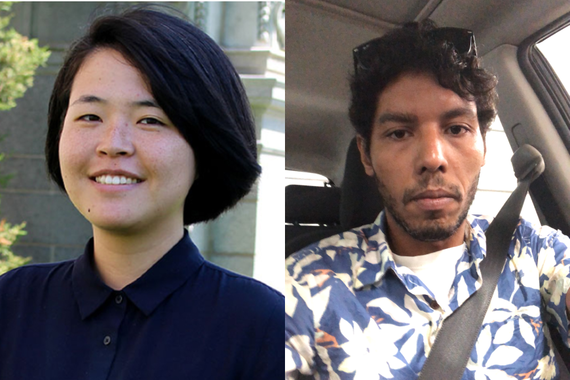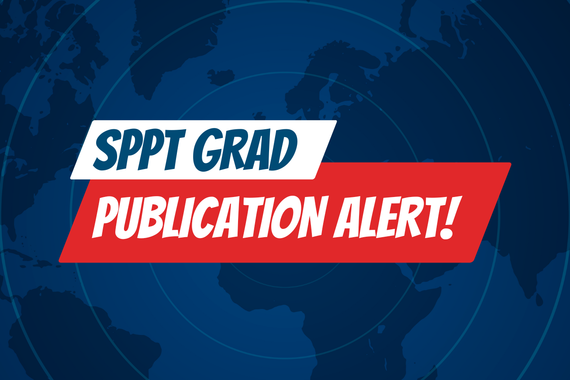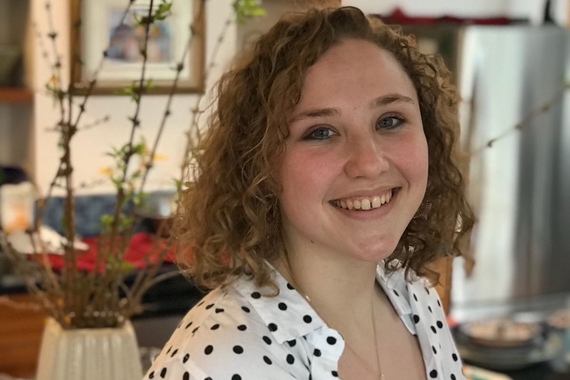Can You Tell a Joke?
How would you define ‘advanced’ in terms of learning a second language? Would you say it’s being able to use a complex verb tense? What about being able to tell a joke in that language? Or even expressing condolences to someone when their loved one dies?
Defining ‘advanced’ is the million-dollar question that Assistant Professor of Hispanic Linguistics Mandy Menke was trying to answer at her conference Evolving Perspectives on Advancedness: A Symposium on Second-Language Acquisition, which took place at the University on February 15-17 in Coffman Memorial Union.
“When we think about the outcomes for our undergraduate students we want them to reach what we call ‘advanced’ levels of proficiency, and there are all sorts of definitions and ways of operationalizing that term,” says Menke.
She knew that building a common definition on her own would be nearly impossible, so she decided to organize a conference to narrow our understanding of language acquisition. Menke and conference co-chair Paul Malovrh, a professor from the University of South Carolina, invited scholars from across the country to present at the symposium. In addition, individuals from various departments at the University and teachers from surrounding high schools participated in the three-day event.
Menke had two goals for the conference: bring scholars together to help define what advancedness in language means, and bridge the gap between linguistic researchers and practitioners. By doing so, she hopes the field of second-language acquisition in Spanish will have a more common metric of what it means for students to be “advanced” and thus cultivate a more immersive learning environment for students who are learning Spanish.
The Building Blocks of Language Acquisition
The conference was based on four areas of research: sophisticated language use in context, acquisition of late-acquired structures, linguistic correlates of proficiency, and individual differences.
Sophisticated Language Use in Context
Sophisticated language use in context refers to how speakers of a second language appropriately express themselves in different situations. Are learners able to tell jokes? Or express condolences? “It entails a lot of cultural knowledge and flexibility with language so you can communicate nuances,” Menke explains.
Menke, being the sole presenter on this topic, believes this area is not addressed as much as it should be. She specifically examined undergraduate academic writing in Spanish and “stance”—whether students can express nuances or engage in a conversation with multiple perspectives. “Our learners are not using the variety of linguistic resources they could to express stance, and a number of faculty have identified that as a challenge for students,” Menke states.
Late-Acquired Structures
Late-acquired structures focuses on how students develop complex usage of the language at different points of their learning. Nine presentations focused on this topic, from how Arabic learners of Spanish use gender agreement in their writing, to the attainment of Spanish consonants.
The acquisition of specific forms is among the most common metrics for identifying advanced learners. Other linguistic phenomena examined at the conference included wh-islands, psych verbs, and past and future tense verbs.
Linguistic Correlates of Proficiency
The third research area, linguistic correlates of proficiency, explores how students who have received “advanced” scores on standardized tests are actually using the language. These presentations included assessing the validity of ACTFL (American Council on the Teaching of Foreign Languages) Can-Do statements for Spanish proficiency and exploring the accuracy of the EIT, or Elicited Information Tasks.
The EIT was created in 1999 by a group of researchers to establish language learners’ proficiency in English, Spanish, German, and Japanese. In these tests, learners listen to 30 sentences, one at a time, and are then prompted to repeat the sentence as accurately as possible.
Megan Solon, assistant professor at the University at Albany, and her colleagues Hae In Park and Marzieh Dehghan from the University at Albany (State University of New York) and Carly Henderson from Indiana University, presented a collaborative project that assessed how valid these EITs were.
The team determined the original 30 sentences of the EIT did not necessarily differentiate between learners of high or low proficiency. As a result, they set out to add six more sentences of a higher difficulty—it turned out that the new 36 sentences grouped participants by proficiency better than the original 30 sentences.
Individual Differences
Finally, individual differences focuses on language aptitude and why one student might be more “advanced” than another. Some of the presentations that explored this concept included an analysis of two different students’ willingness to communicate in Spain and the individual characteristics of native Korean speakers who are learning Spanish.
Susan Gass, Paula Winke, and Emily Heidrich from Michigan State University, however, conducted further research to determine what advanced speakers look like. The trio “assessed the proficiency of the university’s Spanish-language learners to identify advanced students and investigate their profiles.” From a pool of 708 students that took three ACTFL proficiency tests (speaking, reading, and listening) and a background survey regarding their study-abroad experiences, heritage status, use of second-language (L2) resources outside of class (such as using social media and video watching in the target language), and motivation, it was found that 127 students were advanced in at least one skill area. The researchers then used a method called cluster analysis to examine the possible predictors of advancedness in those 127 students.
“While factors such as heritage status and study abroad contributed strongly to the overall advanced group composition,” explains Heidrich, “the factors that best predicted membership was the use of L2 resources outside of class.”
While class level has been used in previous research as a base to determine what it means to be an “advanced” speaker, their research shows that students can advance in a series of foreign-language courses without being truly advanced in one, let alone all, skill areas. The study also highlighted the fact that language curricula should invest more in the use of L2 resources.
Advanced Contributions
In addition to the presentations, there was a keynote address given by Kimberly Geeslin from Indiana University. She focused on the long-standing assumptions about learning a second language, like identifying the way input can be optimized in the classroom, and what research is now saying about those assumptions, showing the implications it has for teaching. She asserted that the field does a good job of describing what learners can do, but the social factors that influence students’ speaking abilities need to be taken into account as well.
By incorporating multiple modes of communication into instruction, including contextual language from a range of speakers, and exposing learners to multiple varieties of the language, second-language acquisition can be achieved more efficiently.
Furthermore, language professors Michael Long from the University of Maryland and James Lee from the University of New South Wales-Sydney also presented, each offering reflections on the themes, questions, and ideas that were related to each of the research areas. Long concluded that the term “advanced” is not absolute, and that proficiency assessments are not “objective or psychologically-motivated measures,” while Lee asserted that becoming “advanced” is not the ending point when learning a second language.
Menke says that the conference may result in a book. “We’re in talks with the publisher to publish a book based on the work that happens at this symposium, so that’s exciting.” She also notes that the conference is a “launching point for new research initiatives to set an agenda for us as a field.”
Undoubtedly, the conference has offered advanced contributions to second-language acquisition, and Menke hopes that the research presented will continue to propel the field forward to benefit language learners.
This story was written by an undergraduate student in CLA.



